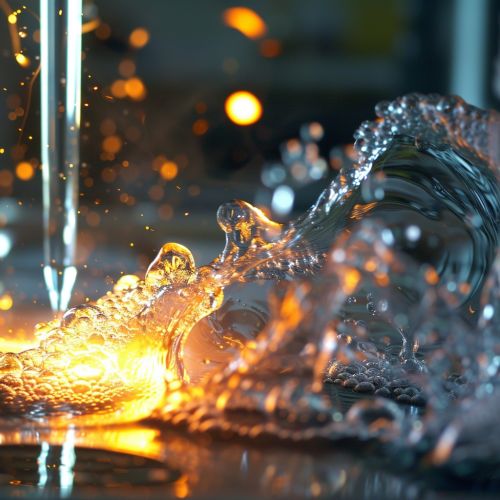Activation Energy: Difference between revisions
(Created page with "== Overview == Activation energy, also known as the energy barrier, is a fundamental concept in chemistry and physics that describes the minimum amount of energy required to initiate a particular reaction. This concept is central to understanding the rates of chemical reactions and the conditions under which they occur. <div class='only_on_desktop image-preview'><div class='image-preview-loader'></div></div><div class='only_on_mobile image-pre...") |
No edit summary |
||
| Line 2: | Line 2: | ||
Activation energy, also known as the energy barrier, is a fundamental concept in [[Chemistry|chemistry]] and [[Physics|physics]] that describes the minimum amount of energy required to initiate a particular reaction. This concept is central to understanding the rates of chemical reactions and the conditions under which they occur. | Activation energy, also known as the energy barrier, is a fundamental concept in [[Chemistry|chemistry]] and [[Physics|physics]] that describes the minimum amount of energy required to initiate a particular reaction. This concept is central to understanding the rates of chemical reactions and the conditions under which they occur. | ||
[[Image:Detail-77703.jpg|thumb|center|A close-up of a chemical reaction occurring, showing the energy input and output.]] | |||
== Concept == | == Concept == | ||
Revision as of 06:55, 7 May 2024
Overview
Activation energy, also known as the energy barrier, is a fundamental concept in chemistry and physics that describes the minimum amount of energy required to initiate a particular reaction. This concept is central to understanding the rates of chemical reactions and the conditions under which they occur.

Concept
The concept of activation energy was first proposed by the Swedish scientist Svante Arrhenius in the late 19th century. It is typically measured in joules (J) or kilojoules per mole (kJ/mol) and can be thought of as the energy required to overcome the natural resistance to change inherent in a system.
Role in Chemical Reactions
In a chemical reaction, the activation energy is the energy required to reach the transition state from the reactants. This is the highest energy state in a reaction, also known as the 'energy peak'. The transition state is a highly unstable state, and it is at this point that the reactants are transformed into products.
Factors Influencing Activation Energy
Various factors can influence the activation energy of a reaction. These include the nature of the reactants, the presence of a catalyst, temperature, pressure, and the pH of the environment.
Activation Energy and Reaction Rate
The activation energy of a reaction is directly related to the reaction rate. The higher the activation energy, the slower the reaction rate, as fewer molecules have the necessary energy to overcome the energy barrier. Conversely, a lower activation energy results in a faster reaction rate.
Activation Energy and Catalysts
Catalysts are substances that can lower the activation energy of a reaction, thereby increasing the reaction rate. They achieve this by providing an alternative reaction pathway with a lower energy barrier.
Activation Energy and Temperature
Temperature also plays a crucial role in activation energy. As the temperature increases, the average kinetic energy of the molecules also increases. This means that a greater proportion of the molecules have the necessary energy to overcome the energy barrier, resulting in an increased reaction rate.
Activation Energy in Biological Systems
In biological systems, enzymes act as biological catalysts to lower the activation energy of reactions. This allows life-sustaining reactions to occur at the relatively low temperatures present in living organisms.
Measurement of Activation Energy
The activation energy of a reaction can be experimentally determined using the Arrhenius equation. This equation relates the rate constant of a reaction to the temperature and the activation energy.
Applications of Activation Energy
Understanding activation energy has numerous applications in various fields such as chemistry, biology, physics, and engineering. It is particularly important in the design of chemical processes and the development of new materials and drugs.
